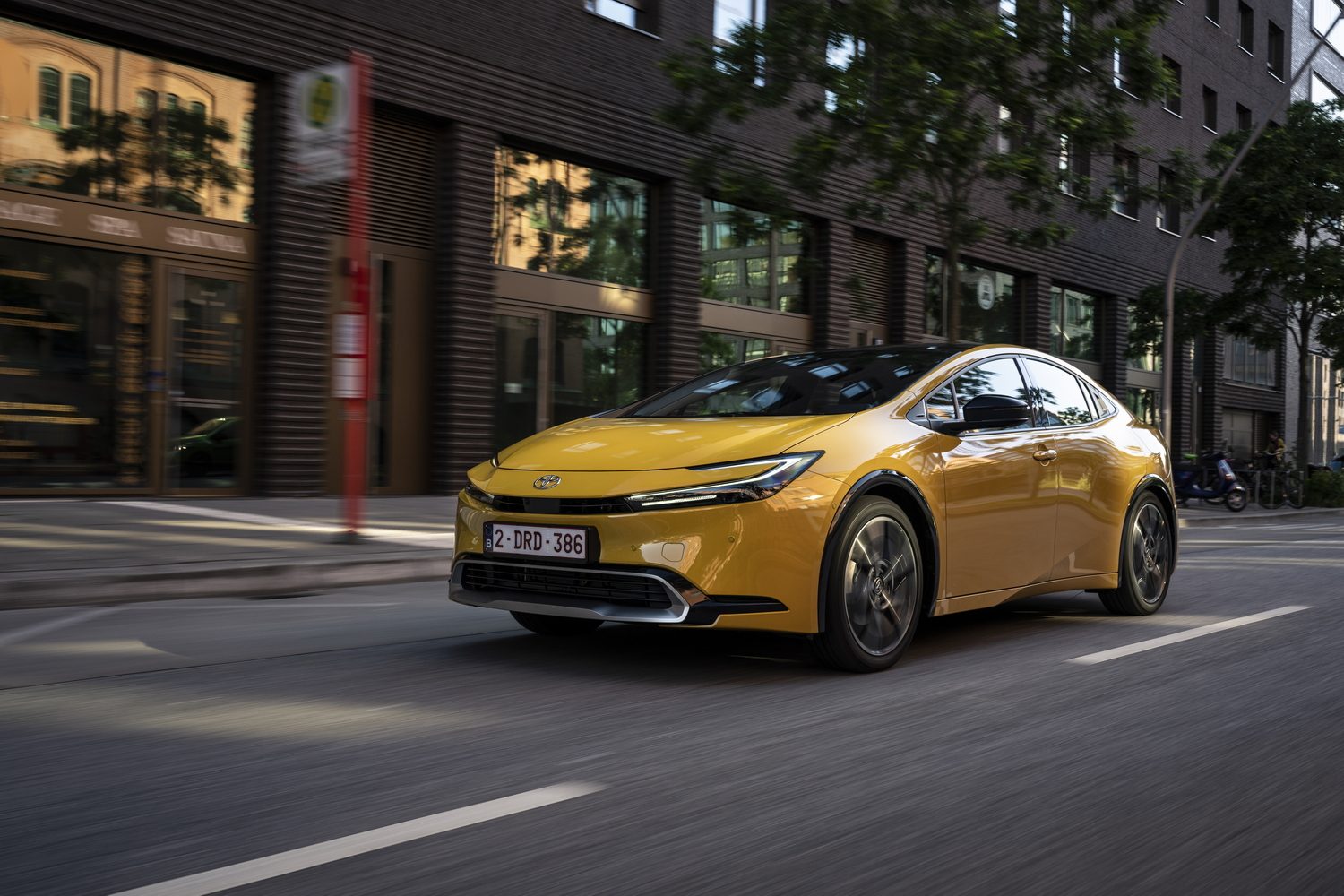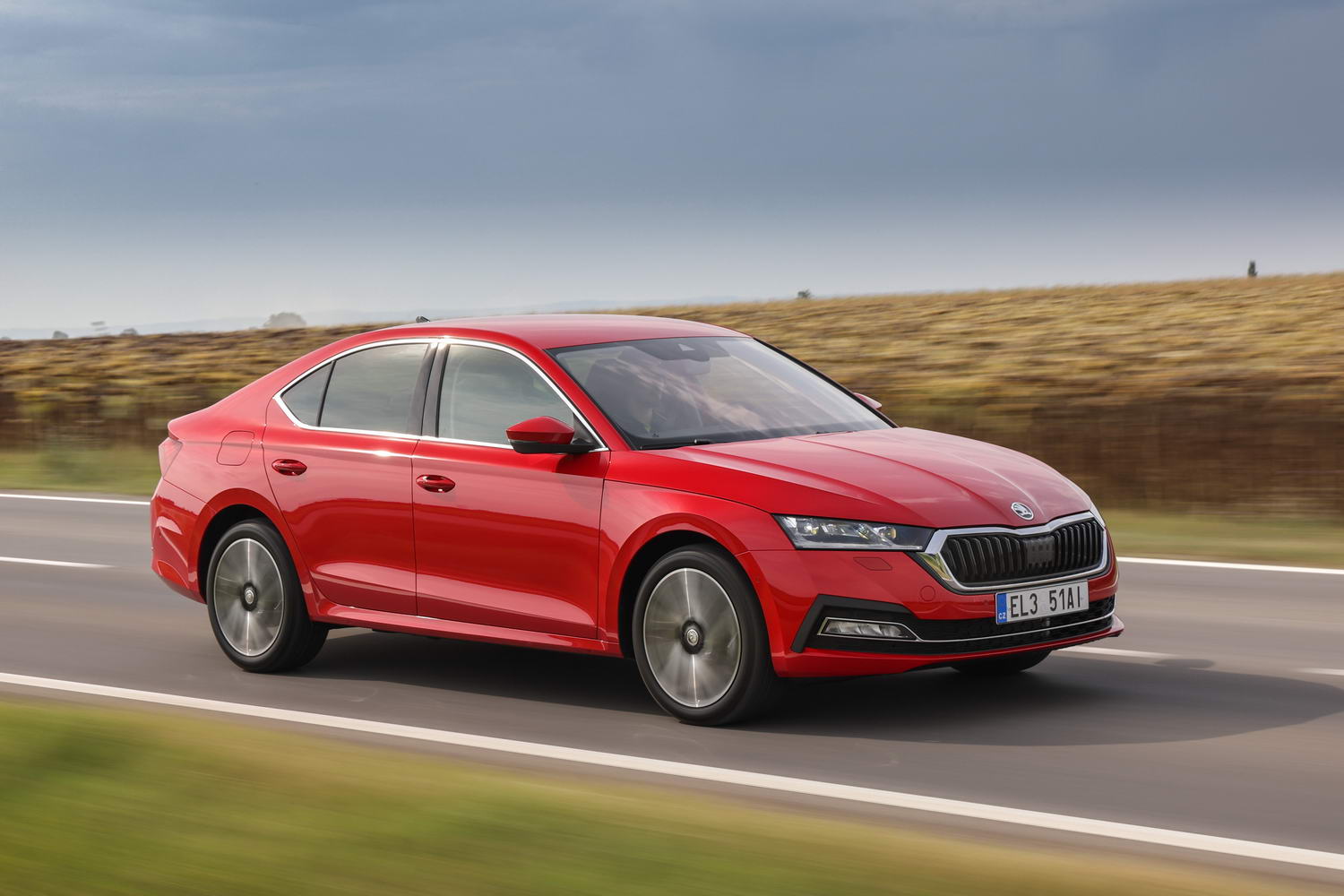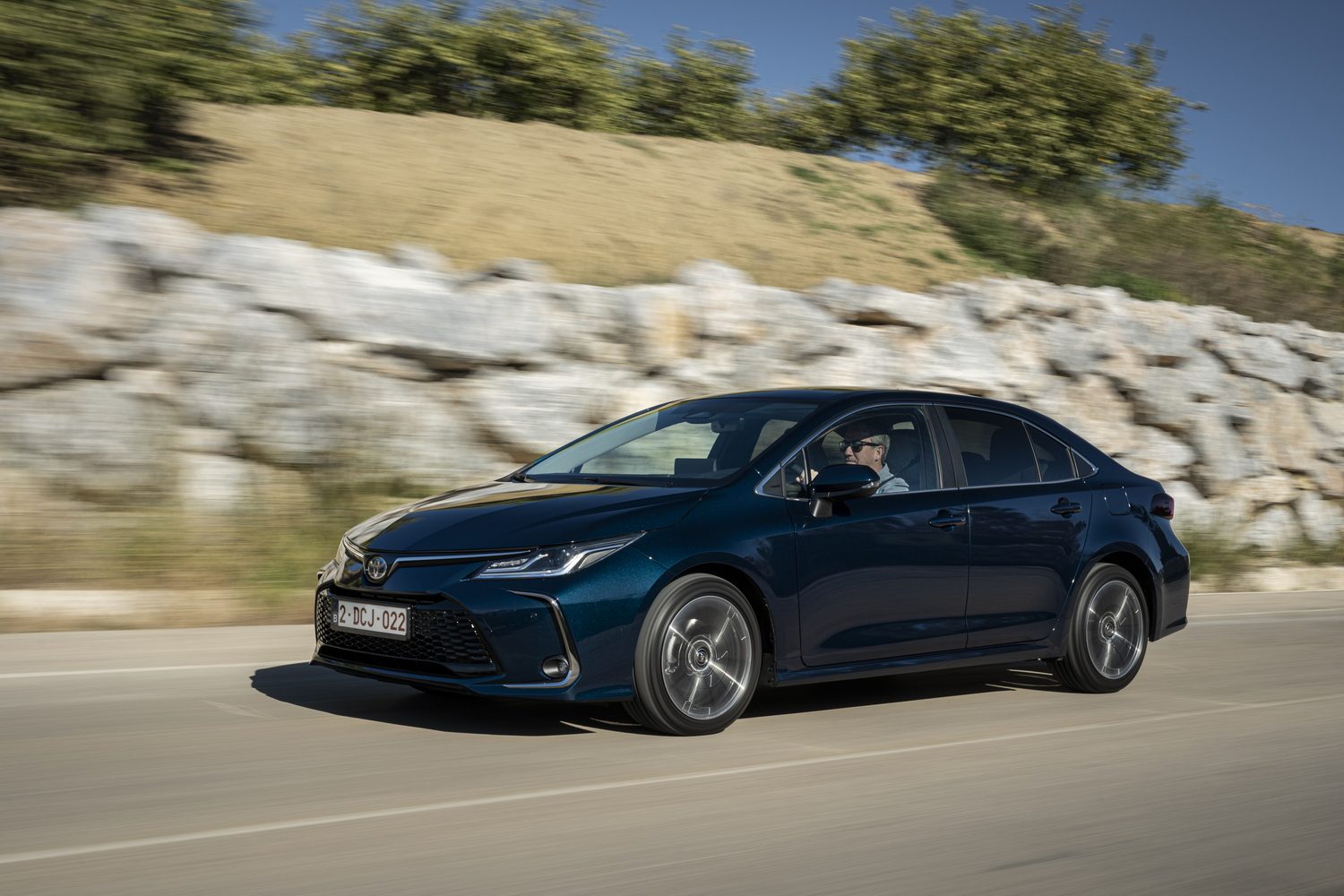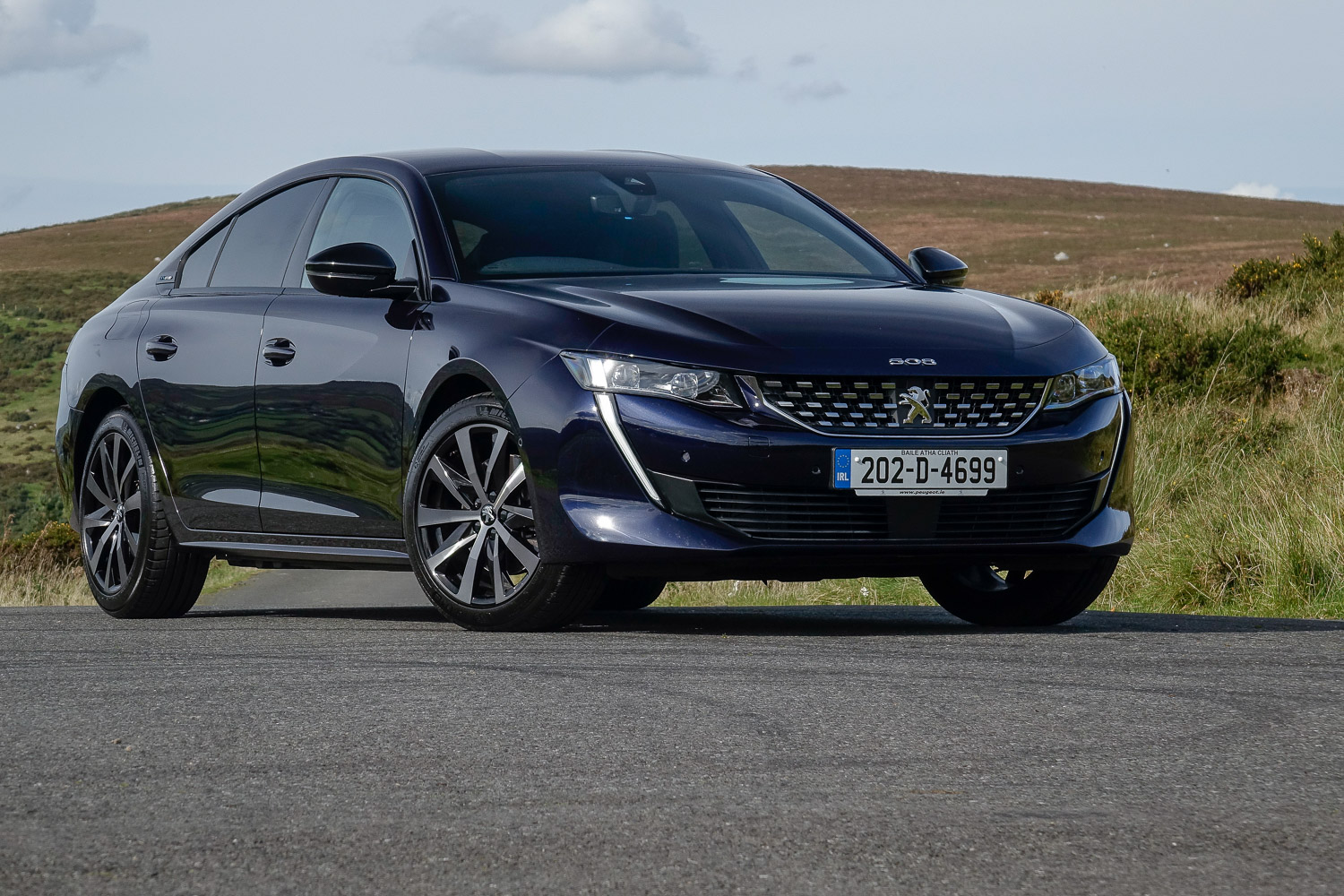The arrival of the fifth-generation Toyota Prius in Ireland is imminent. Following on from our early prototype drive of the shapely new hybrid, it's time to try out the finished product for size. The new Prius will be sold in a single plug-in hybrid guise on the Irish market, prompting many to question why it isn't just fully electric. Is there still a place in the world for the nameplate more associated with hybrid power than any other?
In the metal
Sticking to its commitment to making more interesting cars, Toyota's fifth-generation Prius has a striking exterior design heavily influenced by aerodynamics. The low front nose has C-shaped LED lights that look more like slices in the bodywork than lighting clusters. Gloss black door mirrors, wheel arch surrounds and 19-inch wheels contribute to an attractive package, too. We're huge fans of the Tokyo Gold paint shown here, though six other more subtle hues are available.
The short bonnet gives way to a windscreen that is notably shallow and braced by slender A-pillars. Its proportions are more concept car than production model. To make up for that, Toyota's engineers have tried to improve outward visibility, including moving the side mirrors rearwards on the doors and adding front 'quarter light' windows. However, there are still some considerable blind spots from the driver's seat, mainly due to the rear-view mirror and its surround that also shrouds the forward-facing sensors. When sitting at traffic lights we had to crane our necks around to see the lights. Toyota admits that the exterior design has impacted on interior space.
A new dashboard layout is similar to the fully electric Toyota bZ4X's, with a seven-inch colour instrument display perched high up for drivers to look over the steering wheel at. It works well enough, though some drivers may need to lower the steering wheel more than usual to see the entire display. The wheel features a bank of buttons down either side, which can require some thumb stretching though the wheel remains fully round, which we approve of.
The central touchscreen is good to use, and the new infotainment menu is straightforward, too. You still get physical buttons for the common features such as clearing windows and climate control adjustment. There's enough room for two cup holders at the front of the centre console, but there isn't a lot of space between the front seats. Material quality throughout the cabin looks good, but certain areas have cheap-feeling plastics.
Our test car was equipped with a solar roof, which can add a claimed 8.7 kilometres of driving range per day on average. This won't be offered in Ireland - and we found it to eat into headroom in the front and rear seats anyway. The standard roof adds slightly more room but is still lower than in the outgoing version, leaving taller passengers in the rear brushing their heads off the headlining.
There isn't an especially large boot in the Prius PHEV, either, measuring 284 litres. It's enough to carry a few small cases or a week's worth of grocery shopping, while the flat load-in level is useful. From the rear, the Prius maintains its modern image with taillights contained within a black panel that slopes downwards into the bumper. Other small touches include the Prius name made into the heating element of the glass and 'Hybrid Reborn' stamped into the plastic surrounding the boot.
The whole car has exceptionally clean lines; view it in side profile and you'll see how dramatically low that roofline is, which enables the Prius to be so aerodynamic. According to Toyota, there's no need for a rear wiper as the airflow can clear the glass of any moisture.
Driving it
You get more of an electric car experience in the new Toyota Prius PHEV than any previous version, with a 13.6kWh battery providing sufficient energy for up to 71 kilometres of driving without activating the 2.0-litre petrol engine. Recharging that battery is limited to 3.3kW, meaning it will still take around four hours to charge using a domestic wallbox or public charge point.
Journeys begin in pure electric mode, even if the battery has only a low charge level. Drivers can switch from the 'EV mode' to the mixed hybrid mode via a button. Its 120kW electric motor provides good performance, and when accelerating away from a stop, the Prius feels brisk. The 6.8 seconds it takes to accelerate up to 100km/h is equally respectable, though what is more impressive is how the car now gets up to or increases its speed.
Past CVT (Continuously Variable Transmission) setups often frustrated drivers as the car's acceleration always lagged behind the engine speed, meaning a flurry of revs that wasn't coordinated with forward motion. We're happy to say that is no longer the case and the new Prius it feels much more like a regular petrol-engined automatic car when you need to accelerate up to speed when joining a motorway or performing a quick overtaking manoeuvre.
Even with the engine working harder, there is still a good degree of refinement and cabin noise generally remains low. In urban settings, such as towns or cities where the average speed is typically low, the Prius shines and does a decent job of prolonging its ability to drive without using its petrol engine.
Often, when the engine starts up, it does so for only brief periods. It always seems eager to shut off at any opportunity, such as off-throttle driving or slowing to a stop. Achieving the phenomenal official fuel consumption figure will require some dedication, but if you're the sort of driver that doesn't do significant daily distances and will plug it in to charge at any opportunity, they can be achieved.
The ride comfort complements the refined cabin experience, and if you approach driving the car in an equally relaxed way rather than trying to extract every ounce of performance available, you'll appreciate how much Toyota has improved the Prius.
What you get for your money
Only one version of the Toyota Prius PHEV will be available to buy in Ireland, and it does come with a good level of standard equipment. The Prius gets dual-zone climate control, smart entry, an electric opening rear hatch, 19-inch wheels, synthetic leather upholstery, a powered driver's seat and a 12.3-inch touchscreen with Apple CarPlay and Android Auto.
The Toyota Safety Sense 3 package groups together numerous assistance features. These include Pre-Collision System with Intersection Collision Avoidance Support, Pre-Collision System with daytime cyclist and motorcycle detection, Emergency Steering Assist and Driving Stop, Proactive Driving Assist and Front-to-front Oncoming Car and Motorcycle detection. Toyota includes a three-year/100,000-kilometre manufacturer's warranty and a five-year/100,000-kilometre warranty on all hybrid components, including the battery. If you keep the car serviced within the Toyota dealer network, that hybrid warranty extends up to 15 years with unlimited mileage.
Summary
Toyota has done a superb job styling the fifth-generation Prius PHEV, and it drives every bit as well as it looks. A little disappointment creeps in with the amount of interior space and boot capacity and, to a lesser extent, the quality of some interior materials. Its price also aligns it with many fully electric vehicles, so many will question why not go for a fully electric car?
The Prius PHEV provides the experience of driving an electric car while maintaining the freedom of not always depending on the reliability or availability of the charging network. It has sufficient battery range to cope with the average daily commute without ever needing the combustion engine to activate, and even when it does, it manages to be frugal with the fuel it consumes.



























































